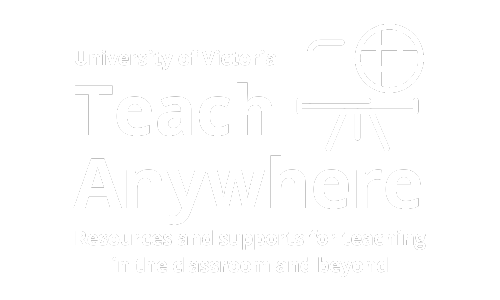In the evolution of artificial intelligence, you may have heard about the newest tool, ChatGPT, released by OpenAI in late November. This conversational chat bot technology is able to write basic essays, answer math questions and write code with various levels of accuracy in minutes through a simple prompt. The platform has over one million subscribers to date. This has raised concerns at UVic regarding academic integrity (please review the UVic Academic Integrity Policy). Given the increasing sophistication of these artificial intelligence type tools, they have the potential to undermine students’ desire and opportunities to demonstrate their learning.
We have just launched GenAI guiding principles and recommendations!
Have a discussion around Academic Integrity
Creating an environment with your students that promotes an investment in learning is key. This begins with having a conversation with your students about academic integrity and the importance of individual expression of knowledge.
To help with that conversation, you can introduce this PowerPoint slide in your course.
Tips to promote academic integrity*
- Clearly describe learning expected through assessments provided.
- Assign continuous and reflective assessments that include support by well-documented sources (such as library resources from peer reviewed and scholarly sources, or primary sources where possible).
- Integrate teaching strategies and methodologies focused on learning process rather than content specific outcomes and provide marks for evidence of critical thinking.
- Provide opportunities for students to share their unique learning experiences.
- Consider alternative ways for students to demonstrate their learning, such as video or oral presentations (adopting the principles associated with Universal Design for Learning) to help ensure unique final products.
- Where possible, use tools such as Crowdmark to support marking, as it provides ways to give efficient/effective feedback.
To help you in the design and redesign of your courses and/or assignments, please connect with us at Learning and Teaching Support and Innovation (LTSI), by emailing ltsisupport@uvic.ca. Our LTSI Consultants and Learning Experience Design team will work with you to design assessments and other classroom strategies that promote academic integrity.
* as detailed in UVic’s Academic Integrity Framework, please see page 6 for more academic practices.
Using ChatGPT as a learning opportunity
Some instructors are choosing to use artificial intelligence as a learning method in their course. Here are some examples on how you may wish to use it*:
- Producing writing passages when given a specific topic for critical review
- Comparing and contrasting texts produced by different AI tools on similar topics
- Creating text in different languages including optimization for search engines
- Reviewing how AI can be used ethically and how it can be a form of plagiarism in your discipline
*All examples require critical analysis and proper referencing on how the tool was used.
Important note:
ChatGPT and other artificial intelligence tools have not been vetted for privacy and security by the University of Victoria. Please see our adoption guidelines for more information. You may use the tool as a learning opportunity, however use of 3rd party tools cannot be used to assess students for learning.
